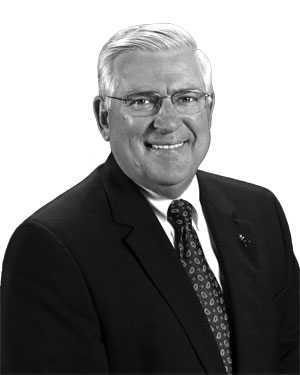Fighting for Schools at Home and Statewide
 John Folks doesn’t seem like the sort of guy to rev up a crowd. With white hair and a friendly twang, the 63-year-old superintendent of San Antonio’s Northside Independent School District is hardly a radical activist. But when he took the stage at the Save Texas Schools rally, he electrified the 11,000-person crowd with a few, simple statements: “Funding in Texas is broke. Funding in Texas is inequitable. And funding in Texas is inadequate.”
John Folks doesn’t seem like the sort of guy to rev up a crowd. With white hair and a friendly twang, the 63-year-old superintendent of San Antonio’s Northside Independent School District is hardly a radical activist. But when he took the stage at the Save Texas Schools rally, he electrified the 11,000-person crowd with a few, simple statements: “Funding in Texas is broke. Funding in Texas is inequitable. And funding in Texas is inadequate.”
The crowd at the Capitol went wild.
That was back in March, when education advocates were still hopeful that state legislators might not cut public school funding. Folks was on the front lines of that fight, speaking across the state about the costs of cutting billions from schools. As then-president of the Texas Association of School Administrators, Folks spent much of his time at the Legislature but he also appeared at rallies and conferences, trying to draw statewide attention to the budget and its impact on students. His efforts earned him recognition, including the Superintendent of the Year award from the Texas Association of School Boards. But in addition to his work in policy and politics, Folks’ greatest accomplishments may be within his own district, where he’s helped create a model of community support for schools.
Folks arrived at Northside in 2002 and quickly began to forge relationships with businesses and volunteers throughout the area. The district already had a foundation, geared solely toward promoting support for and community involvement in local schools, and Folks set about bringing in more volunteers who otherwise might never get to see the education process up close.
Bonnie Ellison, the school-business-community partnerships director for the Northside Education Foundation, says getting people into the school was a key way to get them to buy into public education.
“The difference is, they’ve been in the school,” Ellison explains. “Otherwise they wouldn’t be able to relate to your problems. … They wouldn’t know how crowded it was unless they had tried to find a place to park when they had come to mentor.”
The community support is easy to see. Since Folks arrived in 2002, the community has approved three bond measures, giving the school district around $1.6 billion to spend on facilities. That’s particularly important since Northside ISD is one of the fastest-growing districts in the state. Located in suburban San Antonio, the district has almost 100,000 students, 68 percent of whom are Hispanic. It’s been an academically recognized district for four straight years.
Folks hasn’t stopped there. He’s also worked hard to educate everyone, both in and out of the schools, on the statewide policy problems that impact local education. During the legislative session, he helped create a video explaining school finance and why different districts weren’t receiving enough money.
“Understanding school finance doesn’t take a CPA,” Folks begins in the video. Using a simple series of flying graphics and Folks’ point-by-point breakdown, the video helped viewers understand both the history of school finance and the problems for Northside. In addition to the video, Folks tried to inform everyone on education policies and legislative debates in his “Monday Message,” a weekly email to the districts’ 12,500 employees.
As a result of the Legislature’s $4 billion cut to public school funding, Northside needed to slice $60 million from its budget. Amazingly, no jobs were lost. Instead, the district moved people around, allowing workers to change positions. Still Folks isn’t happy with the situation, since $12 million in cuts had to come directly from classroom funding.
“It was just totally unacceptable,” says Folks of the Legislature’s actions. “I was a very strong advocate that, number one: It is not schools that have failed, it is the state that has failed.”
Folks isn’t shy about his politics and says everyone in education needs to get involved in organizing and advocating.
“Every administrator out there is going to have to work to inform their community, to communicate with their staff, to let them know what the challenges are and let them know what happens if we don’t do this,” says Folks. “Then they’re going to have to get involved in the political arena … to elect people in the state that are going to be supportive of public schools.”


